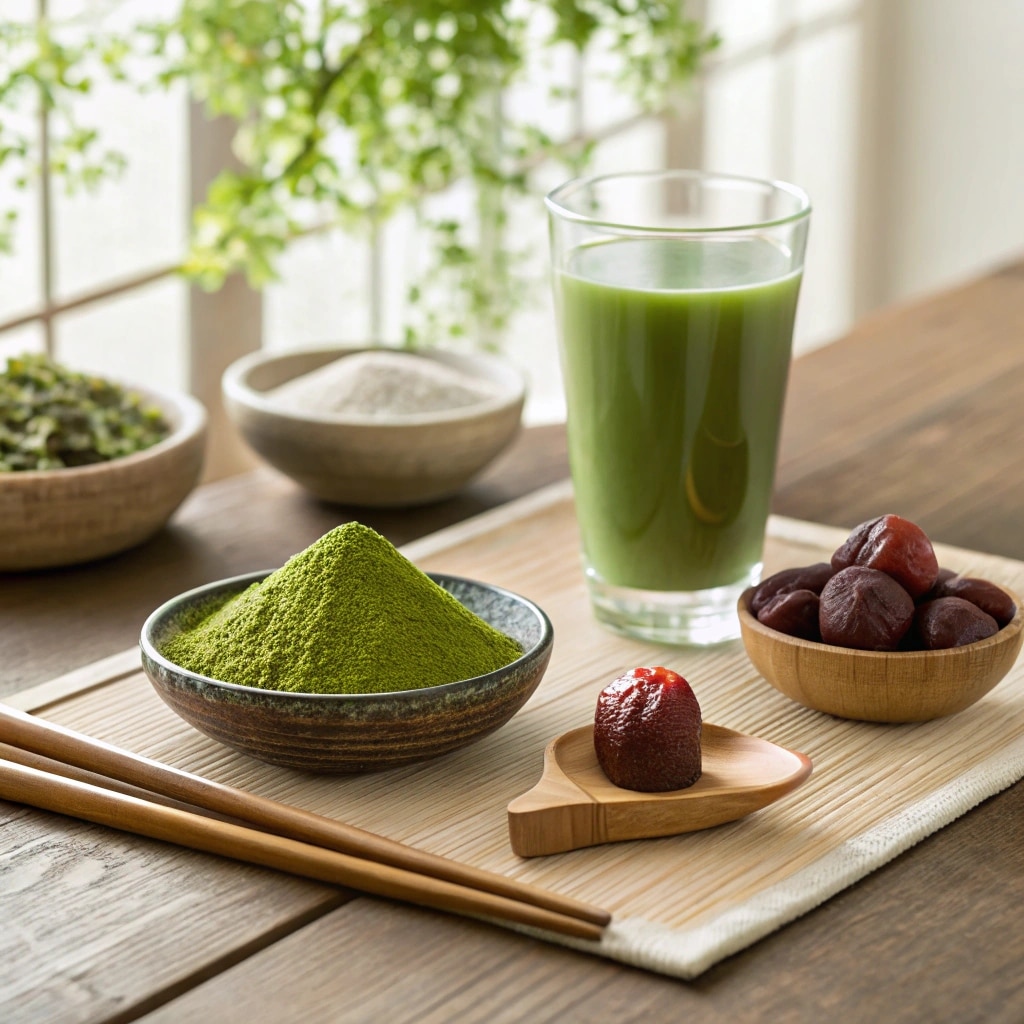Japanese Mounjaro recipes are taking the wellness world by storm. This article dives deep into what a Japanese Mounjaro recipe is, how it’s made, and why it’s gaining so much attention among health enthusiasts. From its weight management claims to its exotic, nutrient-rich ingredients, this dish isn’t just food—it’s a wellness ritual. Whether you’re curious about the buzz or ready to try a delicious, mindful meal, we’ll guide you through every step of the process. In this part, we’ll start with a story, the recipe origin, and what makes the Japanese Mounjaro recipe so talked about today.
Table of Contents
Discovering the Origins of the Japanese Mounjaro Recipe
The Ritual Behind the Wellness Craze
When I first heard about the Japanese Mounjaro recipe, it wasn’t from a nutritionist or fitness guru—it was from my aunt in Osaka. We were sipping tea in her minimalist kitchen as she carefully blended together yam-based fiber, matcha, konjac, and citrus. “This keeps me grounded,” she said, sliding over a bright green glass of the Mounjaro drink. The blend was earthy, slightly sweet, and unlike anything I’d tasted.
As a child, I was raised on meals meant to nourish the soul, not follow trends. But Japan taught me something powerful: food can be both nourishing and therapeutic. The Japanese Mounjaro recipe isn’t just a drink; it’s a tradition rooted in mindful consumption. It’s designed to support digestion, manage blood sugar, and promote satiety—all while being naturally low in calories.
What Exactly Is the Japanese Mounjaro Recipe?
So what is this drink everyone’s talking about? Despite the flashy name, the Japanese Mounjaro recipe isn’t linked to the diabetes drug Mounjaro (tirzepatide). Instead, it’s a natural blend of traditional Japanese ingredients meant to mimic the satiety effects of that medication—without the prescription. Most homemade versions include:
- Konjac root (also called glucomannan) for fiber
- Umeboshi plum for digestion
- Use matcha or green tea powder for a boost of antioxidants and a gentle touch of caffeine.
- Yuzu or lemon for flavor and vitamin C
- Optional: chia seeds or spirulina for added nutrients
The idea is to create a filling drink that calms appetite, stabilizes blood sugar, and gives your body a gentle metabolic lift. Some drink it before meals, others use it as a morning reset.
Homemade Japanese Mounjaro Drink: A Step-by-Step Guide
Simple, Natural Ingredients You Can Find Anywhere
You can enjoy an authentic Japanese Mounjaro recipe right at home—no trip to Japan required. Most of the ingredients are now widely available in Asian grocery stores or online. What makes this drink so effective is its simplicity and the synergy between high-fiber and antioxidant-rich elements. Here’s a quick list of what you’ll need:
- 1 tsp konjac powder (glucomannan) – a natural thickening fiber that promotes fullness
- ½ tsp matcha green tea powder – a natural energy booster packed with antioxidants
- 1 tsp yuzu juice (or substitute with lemon juice) – for brightness and vitamin C
- ½ tsp umeboshi paste or chopped pickled plum – aids digestion
- 1 tsp chia seeds (optional) – for added omega-3 and texture
- 1 cup warm filtered water
If you like a touch of sweetness, a dash of raw honey or monk fruit extract won’t disrupt the drink’s benefits.
Step-by-Step Method for Maximum Effect
- In a small bowl, mix the konjac powder and warm water, stirring quickly to avoid clumps. Allow the mixture to rest for 5–10 minutes until it thickens.
- Add the matcha powder and whisk thoroughly until the mixture is smooth and lump-free.
- Add yuzu or lemon juice, umeboshi, and chia seeds, and mix well.
- Taste and adjust with a sweetener if needed.
- Let it sit another 5 minutes before drinking to allow the fiber to fully hydrate.
Drink slowly, ideally on an empty stomach or before a meal. The fiber expands gently in your stomach, making you feel full without any discomfort. For some, this is a once-a-day ritual. For others, it becomes a cornerstone of a mindful eating lifestyle.eating lifestyle.
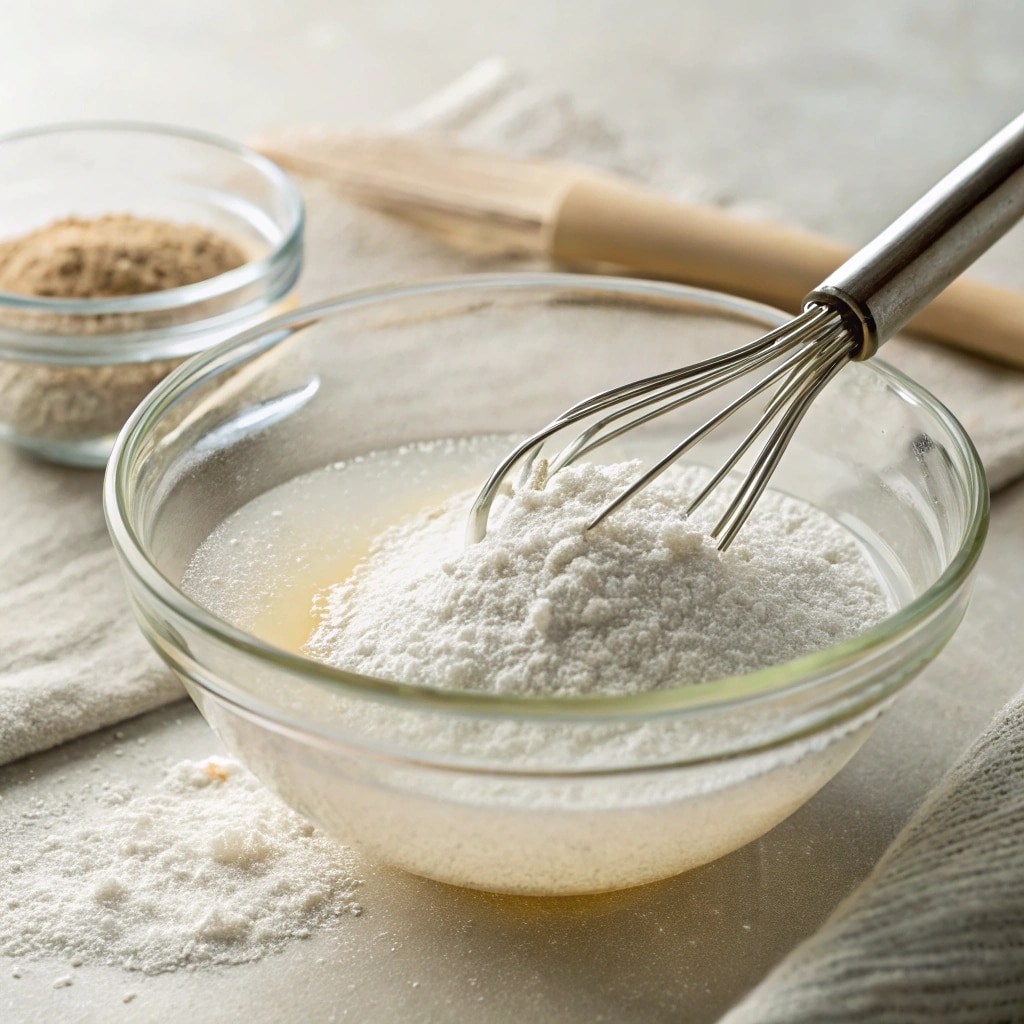
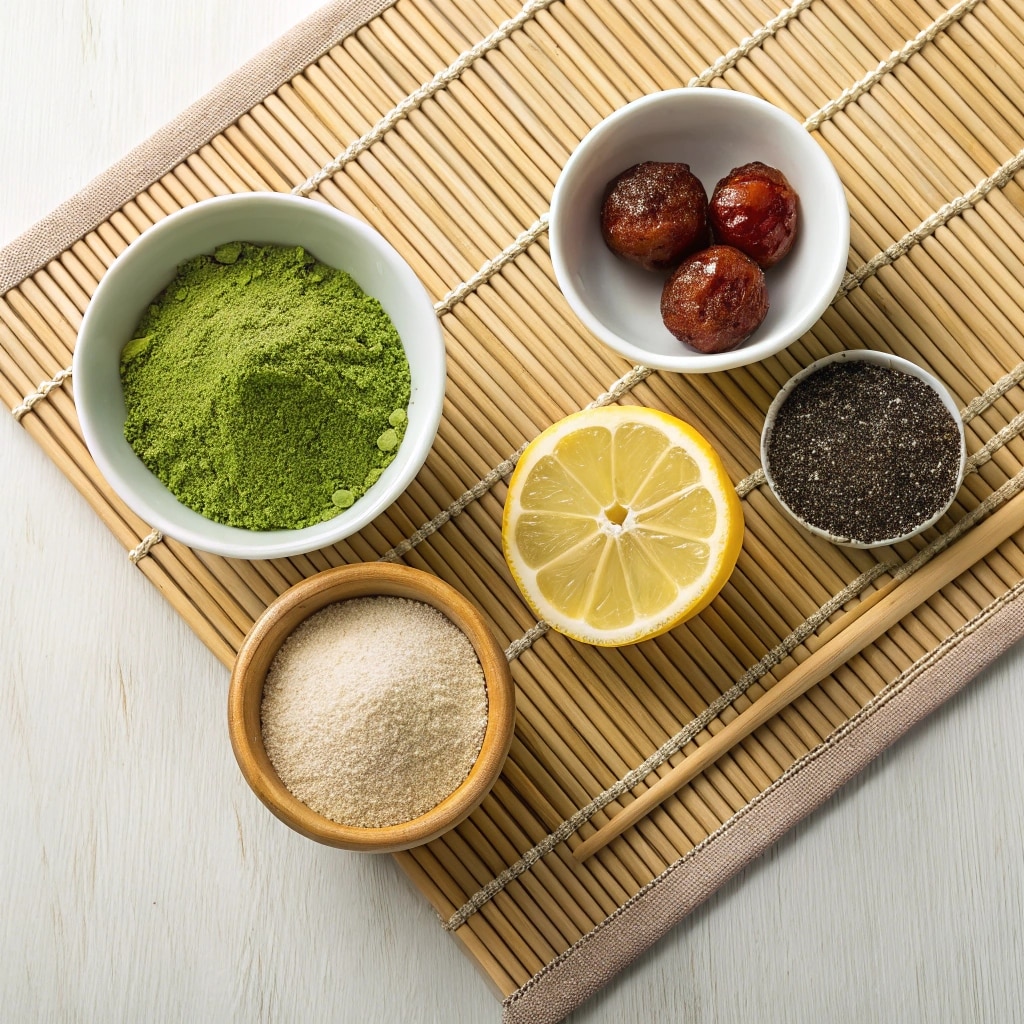
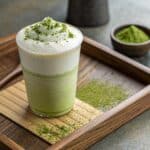
Japanese Mounjaro Recipe: The Truth About This Viral Japanese Wellness Trend
- Total Time: 10 minutes
- Yield: 1 drink 1x
- Diet: Vegan
Description
This Japanese Mounjaro recipe is a natural, fiber-rich wellness drink inspired by Japanese ingredients. Blending konjac, matcha, and citrus, it supports fullness, digestion, and daily balance—perfect for those seeking a natural appetite solution.
Ingredients
1 tsp konjac powder (glucomannan)
½ tsp matcha green tea powder
1 tsp yuzu or lemon juice
½ tsp umeboshi paste or chopped pickled plum
1 tsp chia seeds (optional)
1 cup warm filtered water
Sweetener (optional: raw honey or monk fruit)
Instructions
1. In a small bowl, stir konjac powder into warm water quickly to prevent clumping.
2. Let it sit for 5–10 minutes to thicken.
3. Stir in matcha until smooth.
4. Add yuzu/lemon juice, umeboshi, and chia seeds.
5. Add sweetener if desired and mix thoroughly.
6. Let sit for another 5 minutes before drinking.
Notes
Drink slowly for best results.
Always prepare with enough liquid—konjac absorbs water.
Best consumed on an empty stomach before meals.
Consult your doctor if you have digestive issues or are on medication.
- Prep Time: 5 minutes
- Cook Time: 0 minutes
- Category: Drinks
- Method: Stirred
- Cuisine: Japanese
Nutrition
- Serving Size: 1 glass
- Calories: 15
- Sugar: 1g
- Sodium: 30mg
- Fat: 0g
- Saturated Fat: 0g
- Unsaturated Fat: 0g
- Trans Fat: 0g
- Carbohydrates: 5g
- Fiber: 4g
- Protein: 0g
- Cholesterol: 0mg
Keywords: japanese mounjaro recipe, japanese mounjaro drink, natural mounjaro
Health Benefits of the Japanese Mounjaro Recipe
Why So Many Swear By This Natural Formula
One of the biggest reasons the Japanese Mounjaro recipe has gained such traction is its reputation for promoting satiety without stimulants or artificial ingredients. People turn to it for help with weight control, bloating, and even blood sugar stability—and here’s why it may actually work.
Konjac root, the main ingredient, is packed with glucomannan—a natural fiber known for its health benefits, a water-soluble fiber that expands in your stomach and slows digestion. This helps reduce hunger and unnecessary snacking throughout the day. Meanwhile, matcha provides a steady source of energy without the jittery spikes of caffeine. Combined, they create a drink that helps you feel satisfied and focused.
But that’s not all. Umeboshi supports gut health and lemon or yuzu juice offers a boost of vitamin C and digestion-enhancing acidity. In short, it’s a gentle detox drink without the harsh side effects of typical weight loss cleanses.
Japanese Mounjaro Recipe vs. The Medication
To be clear, the Japanese Mounjaro drink is completely different from the medication Mounjaro (tirzepatide). The original drug is a GLP-1 receptor agonist used under medical supervision for diabetes and weight loss. What this recipe does is draw inspiration from the drug’s appetite-suppressing benefits—through natural means.
People looking for a more holistic, side-effect-free method of managing appetite often turn to this drink. It’s not meant to replace professional care, but to support a healthier eating pattern. Plus, it’s accessible, safe for most people, and can be customized easily.
Still, like anything wellness-related, consistency is key. Drinking it once won’t change much—but incorporating it daily, paired with mindful eating, may support a more balanced lifestyle.
Who Should (and Shouldn’t) Try the Japanese Mounjaro Recipe
Is This Right for Everyone?
While the Japanese Mounjaro recipe is made from natural, traditional ingredients, that doesn’t automatically make it the right fit for every body. If you’re curious about trying it, here’s what to keep in mind.
This recipe is best suited for:
- Those looking to reduce appetite without medication
- People with mild digestive issues or bloating
- Individuals interested in gentle, natural wellness rituals
- Anyone seeking a pre-meal drink to improve fullness
Because the konjac fiber swells in the stomach, it may reduce overeating—but only when paired with balanced meals and a healthy routine.
When You Should Be Cautious
Despite its benefits, not everyone should jump on the Japanese Mounjaro trend. People with certain health conditions—especially those on blood sugar medications or with gastrointestinal disorders—should consult a doctor before use.
Additionally, konjac root absorbs a lot of water. If it’s not consumed with enough liquid or is taken in excess, it can cause bloating or, rarely, intestinal blockage. That’s why this drink should always be prepared as instructed, and consumed slowly.
Pregnant individuals, people with low blood pressure, or those on a medically supervised weight-loss plan should also check with their physician before making this drink a daily habit.
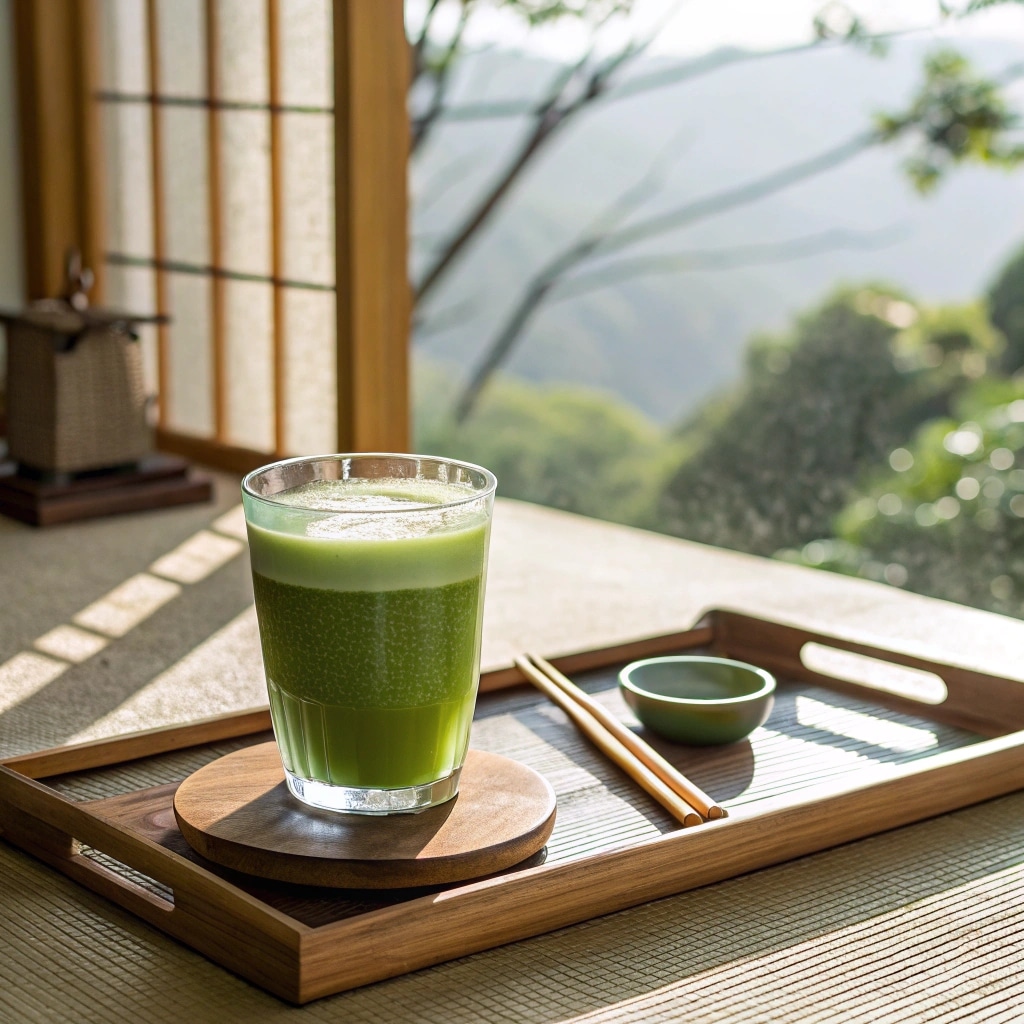
Conclusion
The Japanese Mounjaro recipe is more than a wellness trend—it’s a ritual rooted in simplicity, tradition, and nourishment. Whether you’re curious about its appetite-supporting benefits or you just want to explore something new in your health routine, this natural drink offers a gentle yet powerful approach. As with any health choice, always listen to your body, stay informed, and when in doubt—talk to your doctor.
For More recipes Follow me in Facebook and Pinterest
Frequently Asked Questions (FAQs)
What do doctors say about Japanese Mounjaro?
Doctors generally caution against confusing the Japanese Mounjaro recipe with the prescription drug Mounjaro. While the recipe uses natural ingredients to mimic certain effects like fullness and digestion support, it doesn’t contain any active pharmaceutical agents. Some dietitians support its use as a fiber-rich wellness drink, but it’s not a replacement for medical treatment.
Is there a natural Mounjaro?
There’s no official “natural Mounjaro,” but this Japanese recipe is a popular alternative for those seeking appetite control without medication. It combines konjac, matcha, and citrus to promote fullness and support metabolism naturally.
Does Japanese Mounjaro drink work?
Many users report feeling fuller and snacking less when using the Japanese Mounjaro drink daily. While it doesn’t have clinical trials like the medication, the high fiber content—especially from konjac—has been proven to aid in appetite management.
What are the ingredients in Mounjaro?
The prescription drug Mounjaro contains tirzepatide, a GLP-1 receptor agonist. The Japanese Mounjaro recipe, however, contains natural ingredients like konjac root, matcha powder, yuzu or lemon juice, and umeboshi. They aim to support digestion and reduce hunger naturally, without synthetic compounds.

